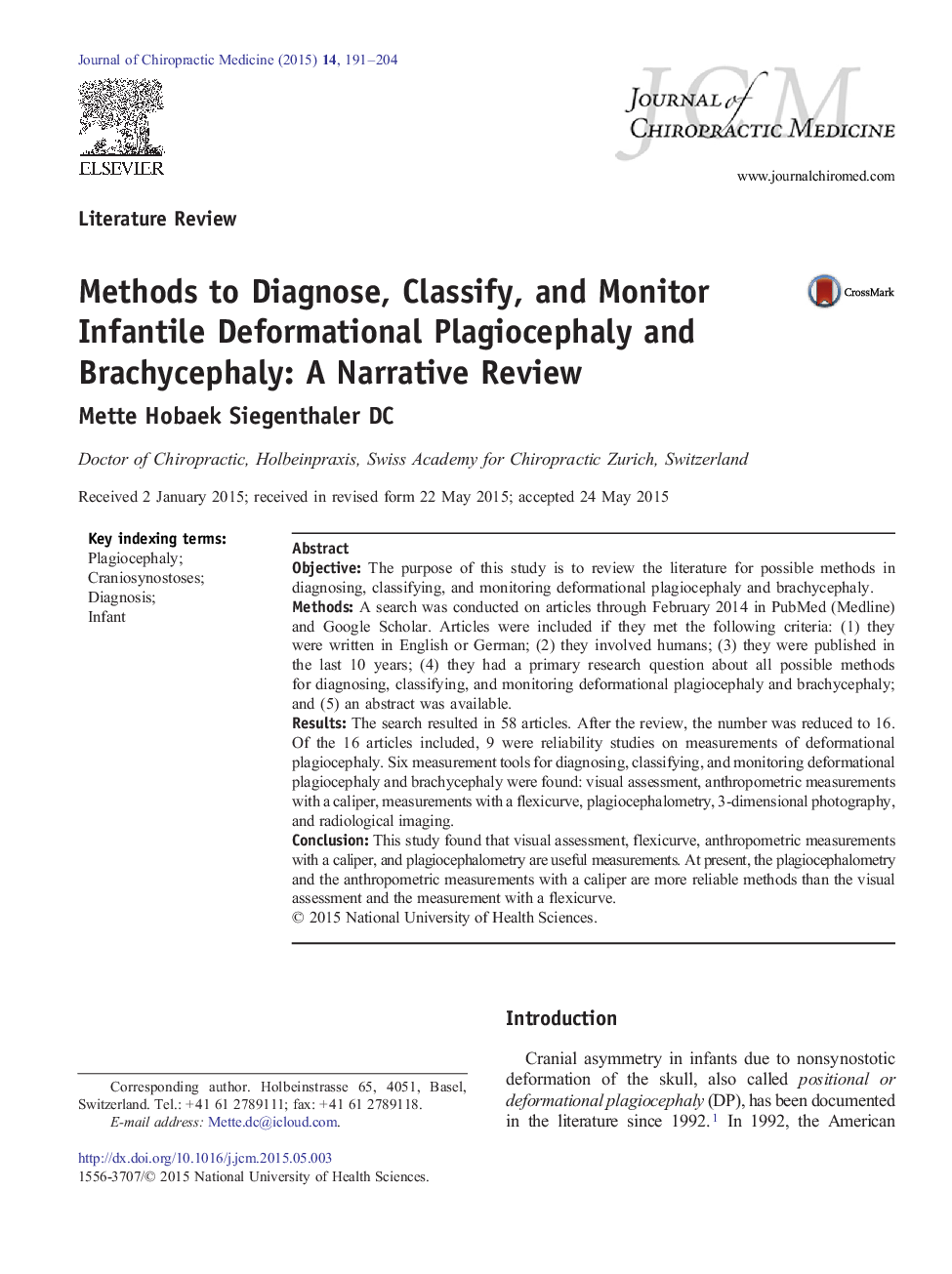| Article ID | Journal | Published Year | Pages | File Type |
|---|---|---|---|---|
| 2619874 | Journal of Chiropractic Medicine | 2015 | 14 Pages |
ObjectiveThe purpose of this study is to review the literature for possible methods in diagnosing, classifying, and monitoring deformational plagiocephaly and brachycephaly.MethodsA search was conducted on articles through February 2014 in PubMed (Medline) and Google Scholar. Articles were included if they met the following criteria: (1) they were written in English or German; (2) they involved humans; (3) they were published in the last 10 years; (4) they had a primary research question about all possible methods for diagnosing, classifying, and monitoring deformational plagiocephaly and brachycephaly; and (5) an abstract was available.ResultsThe search resulted in 58 articles. After the review, the number was reduced to 16. Of the 16 articles included, 9 were reliability studies on measurements of deformational plagiocephaly. Six measurement tools for diagnosing, classifying, and monitoring deformational plagiocephaly and brachycephaly were found: visual assessment, anthropometric measurements with a caliper, measurements with a flexicurve, plagiocephalometry, 3-dimensional photography, and radiological imaging.ConclusionThis study found that visual assessment, flexicurve, anthropometric measurements with a caliper, and plagiocephalometry are useful measurements. At present, the plagiocephalometry and the anthropometric measurements with a caliper are more reliable methods than the visual assessment and the measurement with a flexicurve.
